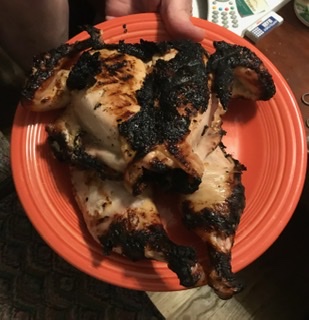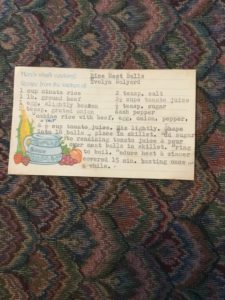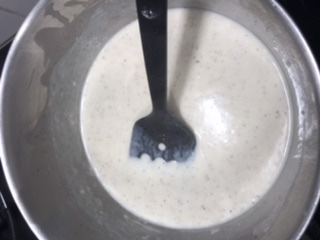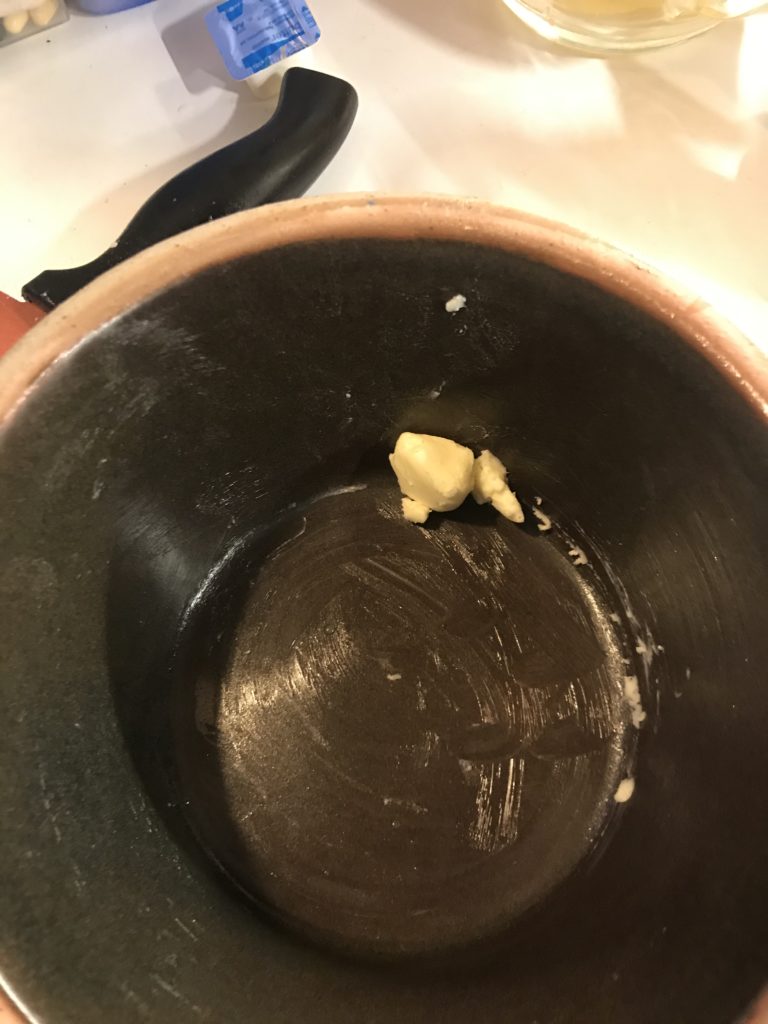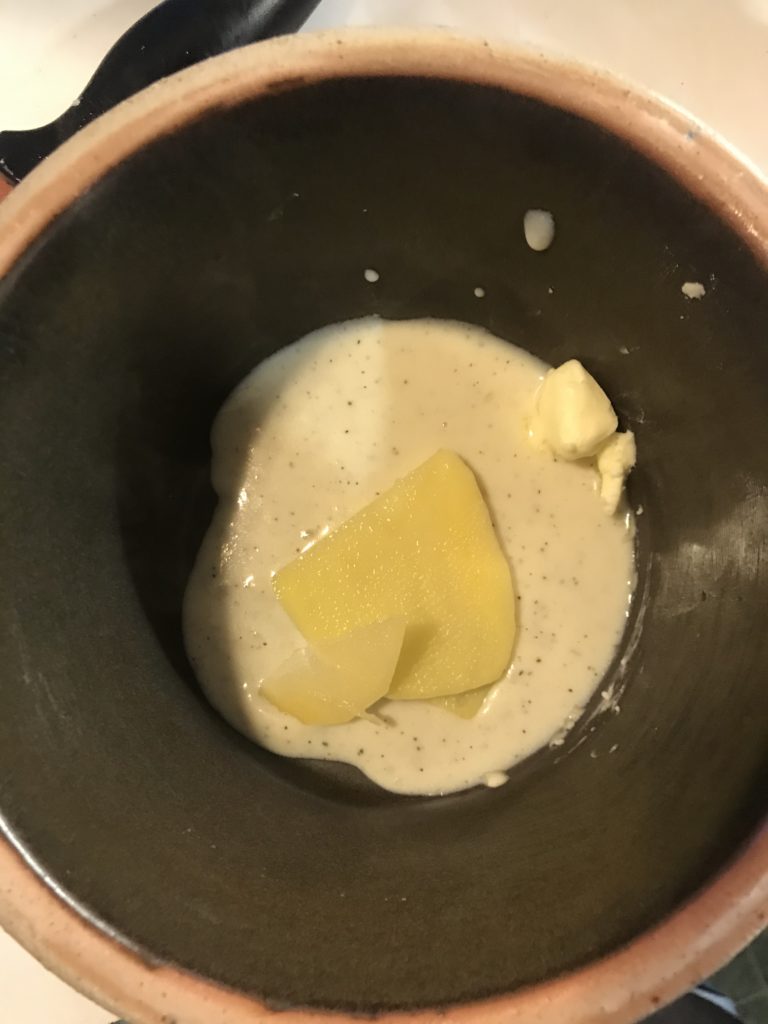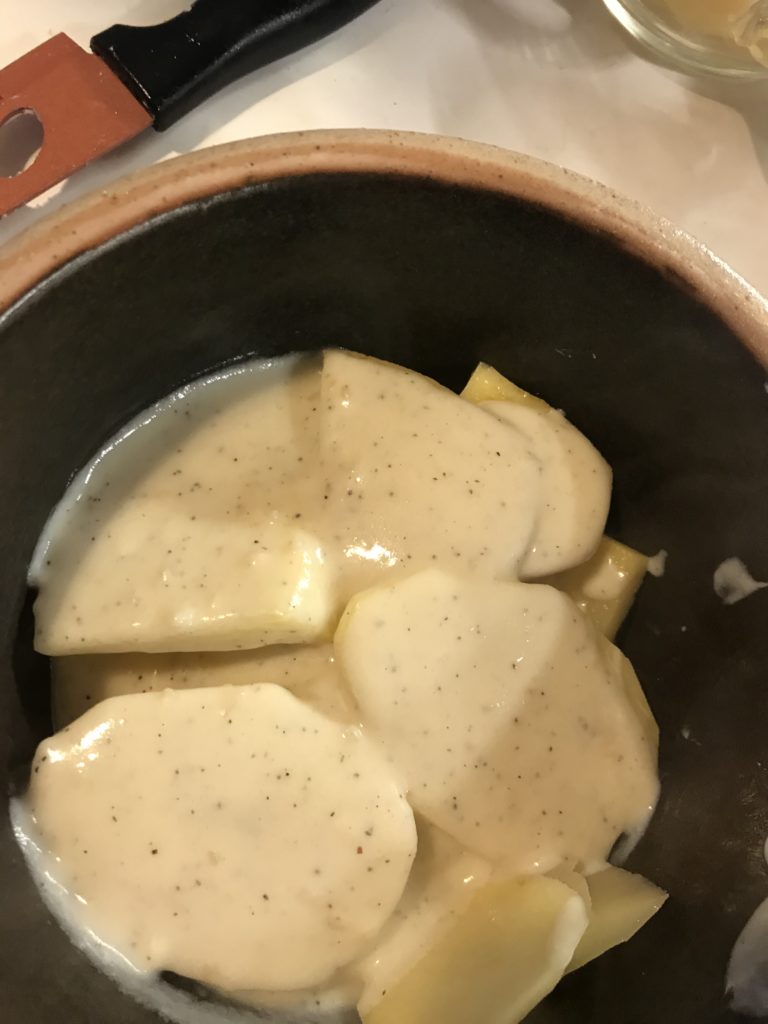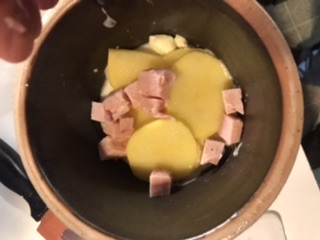I looked around on the internet for recipes to try, and came up with very close to bupkis. So I made something up. All of the stuffing recipes contained onions or shallots, and some bread. Wow. What imagination. The only smart thing they did was to cut a hole through the middle of the roast rather than cut it open and fill it like a jellyroll.
Herewith, my take on Stuffed Port Roast. I had a chance to get a sample to Peggy, and I had a sample the following day. Four thumbs up. I think it turned out better than I expected.
Preheat your oven to 350F.
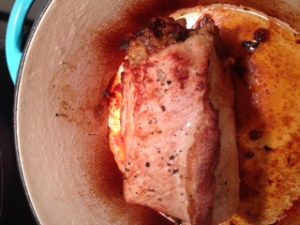
1 boneless pork roast, 3-4#
3 T vegetable oil, divided
2 medium shallots, diced
8 dried apricots, diced
8 dried plums (prunes for those over 50), diced
1 C bread crumbs (I cubed a dinner roll into a 1/4″ dice)
salt, pepper
1/2 t ground sage (because it’s pork)
2T water
1t chicken base (we use Better Than Bullion brand for just about everything)
Dice the shallots, apricots, and prunes, then saute in 1 T vegetable oil until the shallots are tender. Mix with the bread. Dilute the chicken base with the water, add to the stuffing, and mix is all up well.
Compress the pork roast from the ends, like a large filet mignon, and with a long knife, stab through the center – lengthwise – of the pork roast. Flip the roast end-for-end and stab again, taking care to align the hole in the roast. Use your fingers to open the hole as wide as possible, and fill the cavity with stuffing. Turn the roast, again end-for-end, and stuff from the other end, until the roast is firmly stuffed. Salt and pepper all four sides of the roast to your liking.
Heat the remaining vegetable oil in a Dutch oven, and sear the roast on four sides. Cover, and place in the oven for 45 minutes. Temp in the stuffing should reach at least 145F. (USDA is now calling for 140F for pork – it used to be 160F, but that always made for pretty dry meat.)
Rest the roast, covered, for 10-15 minutes, slice and serve.
You can make gravy with the drippings, which are mostly rendered fat if you’d like. For each T of drippings, add 1 T of flour, and cook to form a roux. For each T of drippings, add 1/2 C of milk or chicken stock (made from chicken base, just sayin’), stir and cook until you like the consistency, about 5-10 minutes.
